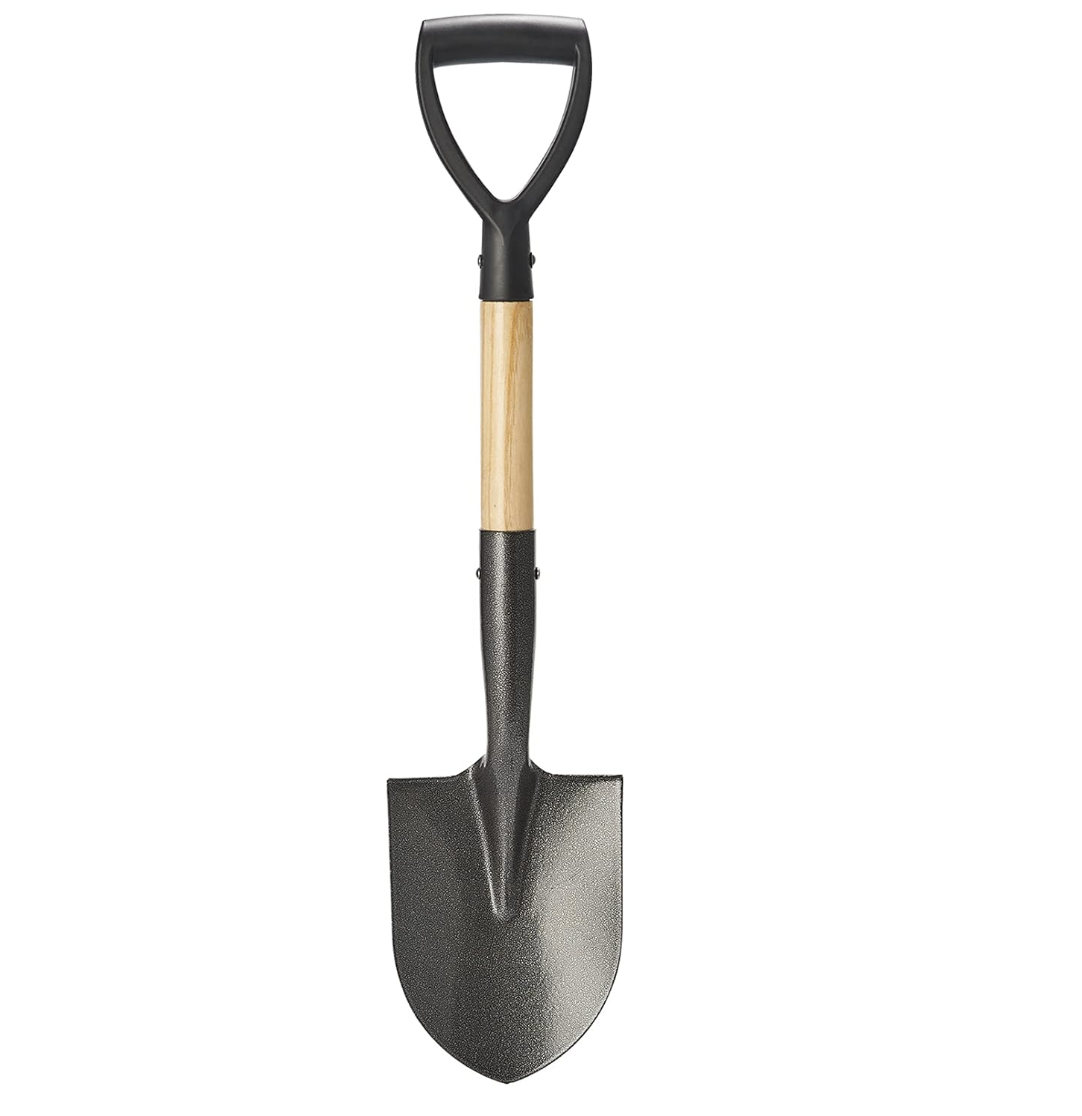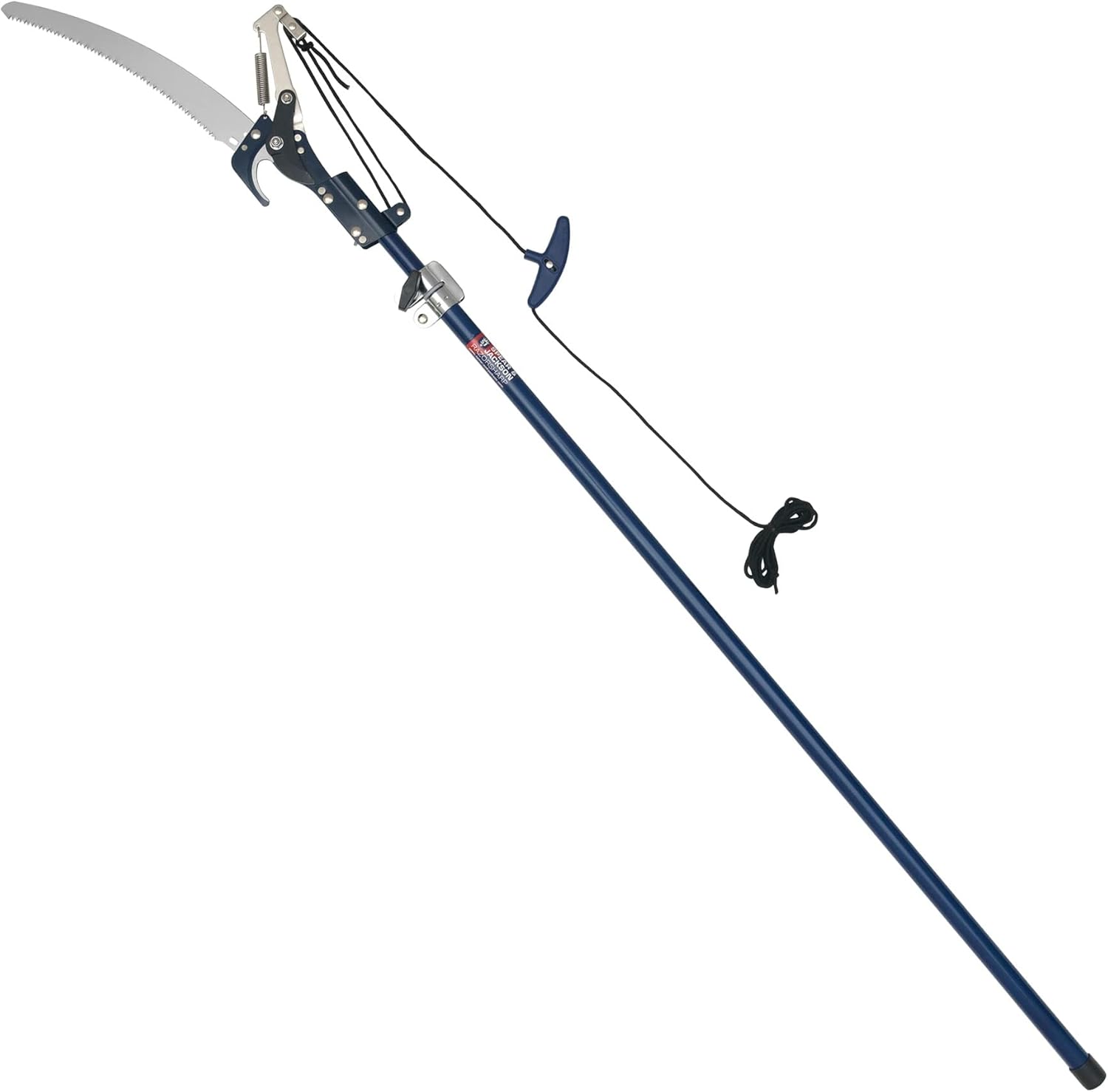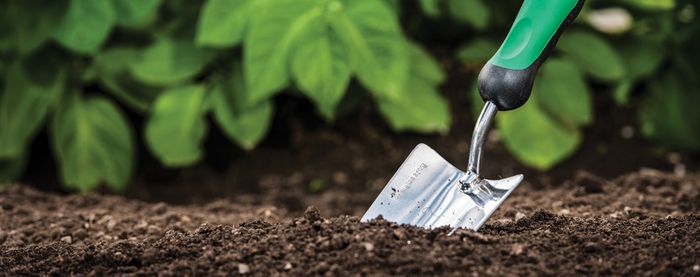Beautiful, Low-Maintenance Plants
Amp up your garden’s wow factor by planting one of these no-fuss show-stoppers

Understatement has its place in garden design, but every now and then, you need a plant with impact, one that stands up and demands attention. You know the type: those sporting outrageous color, enormous leaves, or outlandish textures. But with plants, as with people, glamour sometimes comes with a fussy temperament, so I’m always on the lookout for perennials and woody plants that make a statement but require relatively little care. Here are six flamboyant favorites of mine, all of which are as easy to grow as they are eye-catching.
Delicate black foliage spices things up

Name: Black Lace™ elderberry (Sambucus nigra ‘Eva’)
Zones: 4–7
Size: 6 to 8 feet tall and 8 to 10 feet wide
Conditions: Full sun for best foliage color; moist, rich soil
No-fuss qualities: Adapts to a wide range of soil and lighting conditions; grows quickly; requires infrequent pruning
While many purple-leaved plants fade to green as the weather warms up, Black Lace™ elderberry holds its sultry hue all summer long. With its deeply cut, feathery foliage, this care-free shrub makes a dramatic yet fine-textured accent plant. As an added bonus, this elderberry’s purple leaf color infuses its wide spring flower clusters, turning them from the typical dull, greenish white to a lovely soft lilac-pink. Try planting Black Lace™ with the white-variegated ‘Cabaret’ miscanthus (Miscanthus sinensis* ‘Cabaret’, Zones 4–9) for an eye-popping display of contrasting form and color.
*See invasive alert below.
Savor hot pink blooms from spring to fall

Name: ‘Ann Folkard’ hardy geranium (Geranium ‘Ann Folkard’)
Zones: 5–9
Size: 2 feet tall and 3 feet wide
Conditions: Full sun to partial shade; prefers moist, well-drained soil
No-fuss qualities: Disease-free; tolerates all types of soil and climate conditions; grows rapidly but is noninvasive; blooms continuously
This sprawling perennial dots its lime green foliage with 2-inch-wide flowers in a magenta so intense it looks electrified. A distinct black eye at the center of each flower adds to the impact. ‘Ann Folkard’ hardy geranium starts blooming in late spring and doesn’t let up until the first hard frost cuts it down. With its bold color and constant blooms, this hardy perennial commands the spotlight.
Make a statement with spikes and stripes

Name: ‘Sparkler’ sedge (Carex phyllocephala ‘Sparkler’)
Zones: 7–10
Size: 2 feet tall and wide
Conditions: Partial to full shade; prefers moist soil
No-fuss qualities: Grows quickly but is noninvasive; adapts to a wide variety of soils
Eye-catching, low-maintenance plants are rare enough, but the choices for shaded locations are even slimmer. The aptly named ‘Sparkler’ sedge enlivens shade plantings with green-and-white-streaked blades that explode just like fireworks from the end of its upright stalks. With its unusual form and crisp leaf markings, ‘Sparkler’ is lively company for other shade-loving foliage plants.
Foliage that won’t be ignored

Name: ‘Red Dragon’ persicaria (Persicaria microcephala ‘Red Dragon’)
Zones: 4–8
Size: Up to 3 feet tall and wide
Conditions: Full sun to partial shade; prefers moist, well-drained soil
No-fuss qualities: Disease-free; adapts to a wide range of soil, moisture, and lighting conditions; grows quickly but is noninvasive
Deep maroon foliage with silver-and-black chevron markings and bright red stems make this big clumping perennial a standout along borders. Although the minuscule white flowers of ‘Red Dragon’ persicaria don’t add much to the picture, blazing orange, gold, and scarlet fall colors are a welcome bonus. Some members of the genus are maintenance headaches, with invasive stolons that spread around the garden; ‘Red Dragon’ has better manners and stays put.
Help them look their best
Heed these design tips to get the most out of your garden exhibitionists:
Don’t overdo it. A garden with too many flamboyant plants is a lot like a dinner party where every guest is a dazzling extrovert: The sensory overload can detract from the merits of each individual. Dole out your most extravagant plants carefully and with purpose.
Mind your punctuation. I use attention-grabbing plants as punctuation in the garden. Situate them at anchor points, such as at the ends of beds and borders or at the point where two pathways intersect. I also use them to mark transitions between spaces. Large showy plants can play the same role as a statue or water feature because their flashy looks make them natural focal points.
Choose complementary companions. The right company can bolster the impact of even the most sensational plant. Look for contrasting combinations. The explosive form and bright stripes of ‘Sparkler’ sedge, for instance, are twice as bold when rising out of a dark, fine-textured carpet of ‘Platt’s Black’ brass buttons (Leptinella squalida ‘Platt’s Black’, Zones 4–7). Or pair the dark burgundy of ‘Red Dragon’ persicaria with gold or silver foliage.
This lily grows 6 feet tall

Name: ‘Silk Road’ Orienpet lily (Lilium ‘Silk Road’)
Zones: 4–8
Size: 6 to 7 feet tall and 1 foot wide
Conditions: Full sun to partial shade; light, loamy, well-drained soil
No-fuss qualities: Long-lived; disease-free; tolerates extreme heat and cold, varied lighting conditions, and summer drought; doesn’t require staking
Tall, fragrant, and colorful, with remarkable health and vigor, ‘Silk Road’ is a standout among the new breeds of Orienpet lilies. Dozens of flamboyant, 6-inch-wide, red-and-white blooms top its sturdy 6- to 7-foot-tall stalks in July and August. Tall lilies, such as ‘Silk Road’, offer loads of color and fragrance without taking up much space. Give the big bulbs fertile soil and good drainage, then stand back and watch them increase in size and number from season to season.
Prickly texture plus a splash of blue

Name: ‘Jade Frost’ sea holly (Eryngium planum ‘Jade Frost’)
Zones: 5–9
Size: Up to 2 feet tall and wide
Conditions: Full sun; well-drained soil
No-fuss qualities: Disease-free; tolerates neglect, poor soil, salt, heat, and drought
Most sea hollies are dramatic plants—with their spiny, steely blue flowers—but ‘Jade Frost’ ups the ante with foliage that emerges broadly edged in pink before turning to boldly patterned cream and green. Like all other sea hollies, this cultivar’s blue flower heads last on the plant for several weeks and are superb in dried arrangements—that is, if you can bring yourself to pick them. For all its outlandish looks, ‘Jade Frost’ is as tough as nails once it’s established. If its cream variegation is too ostentatious for you, the long-lasting, brilliant blue flower heads and unmarked foliage of ‘Sapphire Blue’ sea holly offer a less extreme option.
A hugely improved tropical

No-fuss qualities: Tolerates pollution and other urban stresses; adapts to a wide variety of soil and moisture conditions
Name: ‘Spider’s Web’ paper plant (Fatsia japonica ‘Spider’s Web’)
Zones: 7–10
Size: Up to 8 feet tall and 6 feet wide
Conditions: Partial shade; any well-drained soil
I can’t remember the last time a single cultivar gave a plant the kind of new lease on life that ‘Spider’s Web’ has for paper plant. Big, bold, and tropical, paper plant is one of the toughest and most impressive of the large shade plants, but I’ve always disliked how its dark leaves and coarse texture make shady settings feel even gloomier. Enter ‘Spider’s Web’, whose palmate leaves bear delicate cream-colored tracery that magically transforms the plant from ponderous to weightless. The bombproof constitution remains intact, and though ‘Spider’s Web’ grows slower than others of the species, that’s a plus in small gardens.
An old favorite in a new color

Name: ‘Primrose Heron’ lambs’ ears (Stachys byzantina ‘Primrose Heron’)
Zones: 4–8
Size: 1 foot tall and 18 inches wide
Conditions: Full sun; any well-drained soil
No-fuss qualities: Long-lived; disease-free; tolerates heat, cold, drought, and poor soils; deer resistant
Lambs’ ears is beloved for its fuzzy silver foliage, but ‘Primrose Heron’ adds a vibrant twist with its gold-to-chartreuse leaves that shimmer brightly beneath a layer of white down. ‘Primrose Heron’ is a snap to grow, and a few of these moderate spreaders will quickly form a dense, weed-proof ground cover or edge planting. It’s especially attractive combined with blue or violet Siberian iris (Iris sibirica, Zones 3–8), campanula (Campanula spp. and cvs., Zones 3–9), or flowering sage (Salvia spp. and cvs., Zones 5–11).
*Invasive alert: Miscanthus (Miscanthus sinensis)
This plant is considered invasive in CT, GA, IL, IN, KY, MD, NC, NH, NJ, NY, PA, SC, TN, VA, and WI.
Please visit invasiveplantatlas.org for more information.
Fine Gardening Recommended Products

ARS Telescoping Long Reach Pruner
Fine Gardening receives a commission for items purchased through links on this site, including Amazon Associates and other affiliate advertising programs.

Corona® Multi-Purpose Metal Mini Garden Shovel
Fine Gardening receives a commission for items purchased through links on this site, including Amazon Associates and other affiliate advertising programs.

Spear & Jackson 4930FZ Razorsharp Telescopic Tree Pruner
Fine Gardening receives a commission for items purchased through links on this site, including Amazon Associates and other affiliate advertising programs.






Comments
so lovely flowers.
I like it
graceful
lovely
Log in or create an account to post a comment.
Sign up Log in